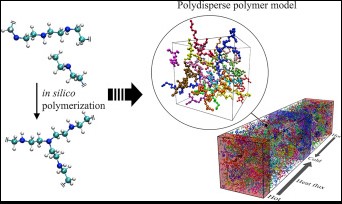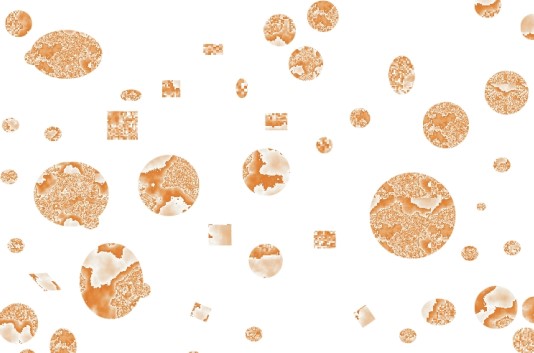Polymers are fundamental substances composed of large molecules made up of repeating structural units, and they are essential in various industries, from healthcare to manufacturing. The properties of these materials are greatly influenced by their molecular structures and the distribution of molecular weights within the sample. A key distinction in polymer science is between monodisperse and polydisperse polymers, which fundamentally differ in their uniformity and distribution of molecular weight.
Monodisperse polymers consist of molecules that all have the same molecular weight, leading to uniform properties and predictable behavior in applications. On the other hand, polydisperse polymers exhibit a range of molecular weights, which can result in varied properties even within the same batch of material. This fundamental difference affects how these polymers are produced, their performance in different applications, and their overall stability and reliability.
Understanding these variations is crucial for scientists and engineers as they choose the appropriate type of polymer for a specific application. The distinction also highlights the advancement in chemical synthesis techniques that enable the precise control necessary for developing monodisperse polymers, which are often required in high-specification environments.

Polymer Basics
Definitions
What are Polymers?
Polymers are large molecules composed of repeating chemical units called monomers. These substances are the building blocks of many materials in the natural and synthetic world, from the cellulose in plants to the plastics we use every day. Their versatility and adaptability make them crucial in a wide range of applications, including manufacturing, medicine, and technology.
Monodisperse vs. Polydisperse
The terms monodisperse and polydisperse refer to the distribution of molecular weights within a sample of polymer. Monodisperse polymers have all molecules of nearly identical molecular weight, leading to uniform properties throughout the material. Polydisperse polymers, in contrast, contain a broad range of molecular weights, resulting in varied properties within the same material. The choice between these two types can significantly affect the performance and suitability of polymers in different applications.
Polymer Structure
Chain Architecture
The structure of polymer chains plays a crucial role in determining the material’s properties. These chains can be linear, branched, or cross-linked:
- Linear polymers feature chains laid out in straight lines and are known for their strength and manageability.
- Branched polymers have side chains extending from the main chain, which can influence the polymer’s density and melting point.
- Cross-linked polymers have chains that are interconnected, providing high elasticity and durability.
Molecular Weight
Molecular weight is a fundamental property of polymers, indicating the mass of a molecule. It directly influences characteristics such as strength, toughness, and viscosity. Higher molecular weights often lead to improved mechanical properties but can make the polymer more difficult to process.
Monodisperse Polymers
Characteristics
Uniformity in Structure
Monodisperse polymers are celebrated for their uniform structure, which ensures consistent behavior and reliability in high-performance applications. This uniformity is particularly important in fields such as pharmaceuticals and electronics, where precise molecular arrangements are crucial.
Molecular Weight Specifics
In monodisperse polymers, the molecular weight specifics are tightly controlled during synthesis, resulting in a narrow molecular weight distribution (MWD). This control is key to achieving the desired properties and functionality in the final product.
Production Techniques
Controlled Synthesis Methods
Producing monodisperse polymers involves advanced synthesis techniques that allow for precise control over the polymerization process. Some of these methods include:
- Living polymerization: A method where the termination step is absent, allowing for more precise control over chain length.
- Anionic polymerization: A technique that uses anionic species to initiate the polymerization process, offering excellent control over molecular weight.
Examples of Techniques
- Atom Transfer Radical Polymerization (ATRP): Ideal for synthesizing block copolymers with controlled molecular weight.
- Reversible Addition-Fragmentation chain Transfer (RAFT): Allows for the polymerization of a wide range of monomers with precise control over the architecture.
Applications
Precision in Use
Monodisperse polymers are preferred in applications where precise and predictable performance is critical. For instance:
- In drug delivery systems, they ensure consistent release rates.
- In electronics, they provide reliable optical and conductive properties.
Industry Examples
- Biomedical devices: Use monodisperse polymers for consistent biocompatibility.
- Optoelectronic components: Rely on the precise optical properties of monodisperse polymers.
Polydisperse Polymers
Characteristics
Variability in Structure
Polydisperse polymers exhibit a wide range of molecular weights within a single batch. This variability can lead to less predictability in properties but offers flexibility and cost-effectiveness in less demanding applications.
Molecular Weight Range
The molecular weight range in polydisperse polymers can vary significantly, affecting the material’s performance. Broad molecular weight distributions can lead to diverse physical properties, which may be advantageous in products like commercial plastics and textiles.
Production Techniques
Common Synthesis Methods
Polydisperse polymers are typically produced using more conventional synthesis methods, which do not require the stringent controls necessary for producing monodisperse samples. These methods include:
- Free radical polymerization: Commonly used for producing polymers like polyethylene and PVC.
- Step-growth polymerization: Used for synthesizing polyesters and polyamides.
Examples of Techniques
- Emulsion polymerization: Produces polymers with high molecular weight variability, used in paints and adhesives.
- Suspension polymerization: Often used for making polystyrene and polyvinyl chloride, which are integral in various consumer products.
Applications
General Uses
Polydisperse polymers are utilized in a variety of general applications where extreme precision is not required but cost-effectiveness is crucial. They serve as the backbone of many mass-produced materials.
Industry Examples
- Packaging materials: Polydisperse polymers like low-density polyethylene (LDPE) are used extensively in packaging for their flexibility and durability.
- Construction materials: Polyvinyl chloride (PVC) used in pipes and fittings benefits from the robustness provided by its polydisperse nature.

Comparing Monodisperse and Polydisperse
Molecular Weight Distribution
Impact on Properties
The molecular weight distribution (MWD) of a polymer significantly influences its physical and chemical properties. In monodisperse polymers, the uniform MWD leads to predictable and consistent material characteristics such as melting points, viscosity, and tensile strength. These properties are crucial for applications requiring high precision, such as in optical and electronic devices where consistent performance is mandatory.
In contrast, polydisperse polymers, with their varied MWD, exhibit a range of properties even within the same batch. This can affect the performance of the polymer in applications such as packaging, where variability may not critically impair the product’s function but can influence factors like seal strength and flexibility.
Analytical Methods
To understand and control the MWD, various analytical techniques are employed:
- Gel Permeation Chromatography (GPC): Measures the size distribution of polymer chains and is essential for characterizing the MWD.
- Dynamic Light Scattering (DLS): Used primarily for synthetic and natural polymers to determine the size distribution of particles in solution.
Performance and Stability
Thermal Properties
Monodisperse polymers generally exhibit more stable thermal properties compared to their polydisperse counterparts. The uniformity in molecular weight ensures that all polymer chains behave similarly under thermal stress, which is vital in applications requiring high thermal resistance.
Polydisperse polymers, however, may show varied thermal behavior within the same batch, affecting their processability and performance in applications where heat resistance is crucial.
Mechanical Properties
The mechanical properties of polymers, such as elasticity, tensile strength, and impact resistance, are also affected by MWD. Monodisperse polymers tend to have better mechanical integrity because their uniform chain length distributes stress evenly across the material. This attribute makes them suitable for high-performance engineering applications.
Polydisperse polymers might exhibit inconsistent mechanical properties, but they are often more cost-effective for producing bulk items where extreme mechanical performance is not required, such as household goods and non-critical components.
Economic and Practical Considerations
Cost Implications
Monodisperse polymers are typically more expensive to produce due to the need for precise control over the polymerization process and the overall higher quality of the raw materials and catalysts used. This makes them less attractive for low-margin applications.
Polydisperse polymers are cheaper to produce and are thus more prevalent in the market. Their production involves less stringent control processes, making them ideal for a wide range of commercial applications.
Manufacturing Complexities
The manufacturing of monodisperse polymers involves complex techniques that require specialized equipment and knowledge. This complexity can limit the ability to scale up production without significant investment.
Polydisperse polymers are easier to produce at scale, which simplifies manufacturing logistics and reduces the cost of production. This ease of manufacture contributes to their widespread use in various industries.
Advances and Innovations
Recent Developments
Recent advances in polymer science have focused on improving the control and efficiency of polymer synthesis. Innovations in catalyst design and polymerization techniques have allowed for greater control over the properties of monodisperse polymers, reducing waste and improving the sustainability of production processes.
Breakthroughs in Polymer Science
One significant breakthrough is the development of environmentally friendly catalytic systems that allow for the recycling of polymers. These systems not only reduce waste but also enable the production of polymers with superior properties and lower environmental impact.
Future Trends
Predictions in Synthesis and Application
The future of polymer synthesis lies in the further development of precision polymerization techniques. Advances are likely to focus on creating polymers with tailored functionalities for specific applications, such as smart materials that respond to environmental stimuli and biodegradable polymers for sustainable practices.
Frequently Asked Questions
What is a polymer?
A polymer is a large molecule composed of repeating structural units, typically connected by covalent chemical bonds. These materials are ubiquitous in daily life, found in everything from clothing and household items to medical devices and industrial applications.
How is molecular weight distribution relevant to polymers?
Molecular weight distribution (MWD) is crucial because it influences the physical properties of polymers such as strength, toughness, and melting temperature. Polymers with a narrower MWD tend to have more predictable and uniform characteristics, which is essential for high-performance applications.
What are monodisperse polymers used for?
Monodisperse polymers are used in applications where uniformity and precision are critical, such as in biomedicine for drug delivery systems, in electronics for precise optical and electronic properties, and in nanotechnology where consistent particle size and shape are mandatory.
Why choose polydisperse polymers?
Polydisperse polymers are typically easier and less costly to produce than monodisperse polymers. They are used in applications where high performance is not critical, such as in general-purpose plastics, fibers, and elastomers used in consumer goods.
How are monodisperse polymers synthesized?
Monodisperse polymers are synthesized using specialized chemical processes that allow for precise control over the growth of polymer chains. Techniques such as living polymerization are commonly used to achieve this high level of control and uniformity.
Conclusion
Polymers play an indispensable role across various sectors, driven by their versatile properties and the ability to tailor these properties to meet specific needs. The distinction between monodisperse and polydisperse polymers is more than just academic; it influences decisions in research and application development, affecting everything from the cost and ease of production to performance and suitability for specific tasks.
Ultimately, the choice between using monodisperse or polydisperse polymers hinges on a balance between cost, performance requirements, and the specific characteristics needed in the end product. As polymer science advances, the ability to fine-tune these materials opens up new possibilities for innovation and efficiency in industries worldwide.

